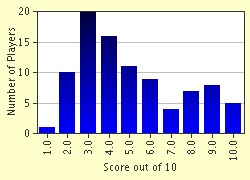Quiz Answer Key and Fun Facts
1. In part due to the published research by Sir Arthur Thompson, a leading Mayanist and scholar of Mayan script of the mid 20th century, the Maya were thought of as 'a gentle theocracy, time worshippers who were a people with a deeply spiritual outlook. Their idea was moderation in all things, and their motto was live and let live. Their character had emphasis on discipline, cooperation, patience and consideration for others.'
What is the current view?
2. Which were the first characters to be deciphered from Mayan script?
3. What is the name of the man who in the 16th century burnt many valuable Mayan codices but nevertheless left after his death the key to understanding Mayan hieroglyphs?
4. Yucatan is a province in south east Mexico. What does the word 'Yucatan' actually mean?
5. What is the Dresden Codex?
6. What was the name of the Russian scholar who in 1952 challenged established thinking on the decipherment of Mayan glyphs even though at that time he had never been to Central America?
7. What does the word 'cutz' mean in Mayan?
8. What does the Mayan word 'tzul' mean?
9. The Mayans expanded their original yearly calender of named days from 260 to 365 days. How many named months were there in the new Mayan calender year?
10. The meaning of Mayan consonants can change depending upon whether or not they are 'glottalized or unglottalized.' What is the meaning of unglottalized and glottalized in this respect?
Source: Author
trojan11
This quiz was reviewed by FunTrivia editor
bloomsby before going online.
Any errors found in FunTrivia content are routinely corrected through our feedback system.

